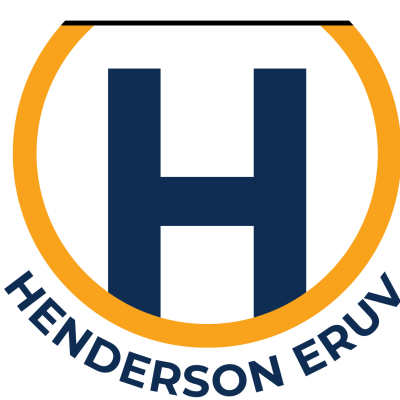
ERUV STATUS
Shabbos Parshas Vayakhel
ALL PARTS OF THE ERUV ARE FUNCTIONAL
OUR ERUV HAS EXPANDED!
How to Read the Map
GREEN LINE – Expanded Eruv Boundaries
BLUE LINE – Original Eruv Boundaries
With Gratitude to Hashem, we recently completed our expansion and enhancment! We would like to thank the hard working members of the community that made this possible.
Please Consider Contributing to our Community Eruv
1450 Horizon Ridge Parkway, Suite A-504, Henderson, Nevada 89012
The Henderson Eruv was originally established in May of 2014. Since then, it helped Henderson grow from a handful of families to a flourishing community of over 80 families. It was built and is maintained by the Ahavas Torah Center. As the community has continued to grow we have thankfully outgrown our eruv. The original structure is no longer sufficient for the expanding needs of our community.
The Eruv Committee has already invested thousands of dollars to bring an Eruv consultant to Henderson during the summer of 2021 and create a thorough plan to ensure a proper expanded Eruv. Rabbi Zomick toured our current eruv and suggested important renovations along with the much needed expansion plan.
The approved expansion moves eastward toward Gibson Rd. and south below Horizon Ridge Parkway. Housing in these areas is less expensive than within the eruv and of course within walking distance to the shul. The expansion also includes a number of hotels and apartment complexes not previously within the Eruv.
This is a huge milestone for ATC and the Henderson Jewish Community and involved many hours of effort to get this approved by the City of Henderson. With the help of Hashem, we were able to secure this approval.
The Laws of Carrying
Chapters 1 and 11 of Talmud tractate Shabbos deals with the melakha of transferring from one domain to another, commonly called “carrying”.
The tractate distinguishes four domains: private, public, semi-public and an exempt area. It holds that the transfer of an article from a private to a public domain is Biblically forbidden; transferring an article between a semi-public to a private or public domain is Rabbinically prohibited; transferring of an article between an exempt area and any other domain is permissible; carrying an article four amos (about 7 ft) is forbidden in a public or semi-public domain and permitted in a private domain or exempt area; and carrying inside a private domain or between private domains may be permissible.
For these purposes “transferring” means “removing and depositing”, so carrying an article out of one domain type and returning to the same domain type without setting it down in the interim into a different domain type does not constitute transference from one domain type to another domain type.
The definition of public and private domain is related to its relative amount of enclosures, not on strict ownership. It should be noted that this is a particularly complex area of law, as the legal definitions of private and public domains are intricate, although clear. Background knowledge, and definitions, of domain types must be understood before one can fully understand the laws of transference in this context.
Indeed, what an Eruv accomplishes is a merger of different domain types into one domain type, making carrying within the area enclosed by the Eruv no different to carrying within a room of a house (i.e. one domain type, namely a private domain), which is of course permitted.
SOURCE
This category of melakha (work) is mentioned in Exodus 16:29:
Let no man leave his place on the seventh day
This verse is in the context of collecting the Manna bread. The Rabbis said, “Let no man go out of his place with a receptacle in his hand.” According to this, the Manna could not be collected on Shabbos because it could not be carried into the Israelites’ homes.
Another Biblical source is in Exodus 36:6:
So the people were restrained from bringing
This verse explains that the Israelites refrained from bringing further materials for the construction of the Tabernacle. The Rabbis say that this event occurred on Shabbos, and not just because no more supplies were needed, but also because the people were not allowed to carry those supplies to the Levite camp. The Rabbis derive the prohibited actions of Shabbos from the actions that were performed to construct the Tabernacle. Based on this, one explanation is that since this verse is written in context of the Tabernacle, it is appropriate to derive further that the people ceased to carry on Sabbath.
According to Jewish law as understood by the Talmud, this prohibition encompasses three actions:
- Moving an object from an enclosed area (such as a private home, public building, or fenced-in area) to a major thoroughfare,
- Moving an object from a major thoroughfare to an enclosed area, or
- Moving an object more than four amos (about 7 ft) within a major thoroughfare.
To prevent confusion over exactly what constitutes a major thoroughfare, the rabbis expanded the ban to any area that was not fenced or walled in.
CHECKING THE ERUV
The boundaries of an eruv must be checked regularly. If the boundary is not complete and contiguous in every element (i.e., one of the elements of the boundary is missing or broken), no valid eruv can exist that Shabbos, and carrying remains prohibited.
ACTIVITIES PROHIBITED EVEN WITHIN AN ERUV
Though a valid eruv enables people to carry or move most items outdoors on Shabbos, all other Shabbos restrictions still apply.

